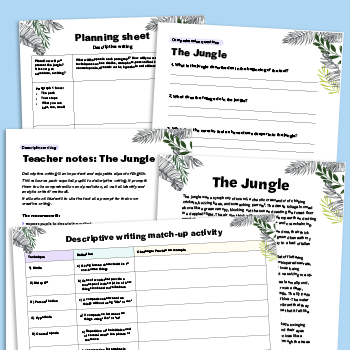“Illuminate the possibilities” – The case for a more diverse GCSE English curriculum

The journey towards developing empathy as an adult begins at school, writes Djamila Boothman – so why is the GCSE English curriculum still so narrow?

‘What techniques do you use to create tension in your creative writing?’ I ask my Y11 students in a GCSE English language revision lesson.
Capturing the few responses on the board, I explain that to develop our own creative writing skills, we must examine others’ writing and identify how they achieve a desired effect. I hand out copies of an extract from Malorie Blackman’s Boys Don’t Cry and read it to them.
As I read aloud, their engagement and interest are evident. The main character, Dante, is a similar age to them. The passage’s interaction between two teenage characters resonates. The topic is of interest and relatable. Maybe even more significant is that the author blurb and accompanying image give no doubt that this is a Black British female writer with an OBE.
For many in this classroom, this is a first. As a Black woman, I feel proud to be able to provide students with this experience. But then I ask myself whether the fact that it’s possible for a child to finish school having never read a book written by a person of colour could really be an oversight in the multicultural society in which we live.
According to the Lit in Colour initiative launched by Penguin Books UK and The Runnymede Trust, 34.4% of students are Black, Asian or minority ethnic – and yet just 0.7% of students study a text by a writer of colour at GCSE, while a scant 0.1% study books by a woman of colour at GCSE. Has systemic racism tiptoed into our classrooms, restricting the quality of the English curriculum and normalising the marginalisation and under-representation of certain groups?
A lived commitment
When schools make claims about inclusion and diversity, one would hope to see that their shared values statements are lived, and not simply laminated. Most UK schools adopt a set of values that promise to champion diversity, inclusion and representation to develop the cultural competence of the school community.
It follows that any school truly committed to such aims would ensure that they are extended to the curriculum. Surely there is no greater way of exploring and honouring the lived experiences of the school community than by using the English literature curriculum to empower and educate?
Moreover, all schools seek to increase engagement, particularly among disproportionately excluded students. Studying literature should promote a love of reading, but how many children can truly love literature when they’re not visible in it? Similarly, how many children can be encouraged to invest the same level of commitment and dedication into English as they do into PE and music without any role models to illuminate possibilities for their futures?
If you cannot be what you cannot see, then we need to look at the messages we’re sending to our children about their future options. Examining the texts we read with them is a good place to start.
Disproportionately excluded
In the multicultural Britain of 2022, there can be little justification for the texts studied in schools to be so predominantly written by White males. These are not the only stories that matter, or the only poems that need to be heard.
The same groups disproportionately excluded from school more generally are often also those disproportionately excluded from the English literature curriculum. That is, excluded from opportunities to feel, be seen and be heard.
This also causes their peers to miss out on valuable learning opportunities. How can we expect society to become more empathic, or address systemic discrimination in the adult world if such discrimination hasn’t first been thwarted in school? What are the long-term emotional effects of this on children – both those whose experiences aren’t currently reflected, and those subliminally taught that ‘their’ stories and perspectives are the only ones that matter?
Trending
Introducing new texts
In the wake of Teach First’s Missing Pages report and others like it, exam boards have committed to meaningful change in support of diversity in English literature specifications. For example, we’ve recently seen a language paper containing an extract by writer Chimamanda Ngozi Adichie.
It’s important to point out that the exam curriculum isn’t ‘the curriculum’ in its entirety, yet many schools have curtailed their KS3 and KS4 selections for years, opting instead to teach to the exam. Danger lies in the perception that there’s no value in texts not on exam board lists.
Surely, there’s as much value in Tracey Baptiste’s The Jumbies for a Y8 student as there is in The Tempest if they go on to study Macbeth at GCSE? There’s a contextual and literary value to learning about the supernatural from an engaging Caribbean story, which serves to promote the spiritual, moral, social and cultural development of all students in the classroom. The hope is that revised set texts will influence fresh choices in schools.
Community consultation
When it comes to curriculum design, who makes the decisions in schools about which texts students will study? Often, it’s the head of department or the English department collectively, but with the quality of the curriculum now so heavily scrutinised and diversity needing to be taken into account, I wonder whether we should consider a form of community consultation.
If a school is going to deliver a unit on World poetry, for example, why not ask parents and students to recommend a poem before making the final selections? As practitioners, we’re absolutely clear on the value reading adds to a person’s life, both intellectually and emotionally. Consequently, we have to ask ourselves whether we’re doing all we can to ensure that every young person finds that author, poet or genre they can genuinely connect with.
We must never forget that access to literature is a luxury many young people don’t have. School leaders must accept our unique role as a potential vehicle for change and social mobility, because we can help the most disadvantaged students access a wide range of literature.
When a child hasn’t been read to by their parent or carer, an English teacher reading to them may be transformational. Additionally, if a teacher reads with a child who speaks English as a second language, over time that child will develop the capacity to take books of their choice from the school library and read them at home to parents, younger siblings and perhaps even other families.
Where to start
The Collins Through Our Eyes anthology is a valuable GCSE resource, designed to bring a range of unseen texts to students and develop the skills they need to succeed in English language, whilst also fostering a love of diverse literature. Unseen texts can come from anywhere and should be carefully selected; this anthology is a great place to begin!
Diversify that curriculum
- Draw attention to learning links across the curriculum, perhaps via the school newsletter and/or student-led videos during tutor time – ‘This week in English we read Malorie Blackman’s Boys Don’t Cry, learnt about contraception in PSHE and performed improvisations about teen pregnancy in drama.’
- Link literature choices to the whole school calendar; champion and celebrate different events and awareness days throughout the year, such as Pride Month or South Asian Heritage month.
- Consider the needs of students with English as an additional language; facilitate opportunities for them to learn and engage more effectively through interpreters, translators and community members.
- Invite colleagues to help run an assembly and/or offer input into your text selections; ask for their opinions about what you have planned, and whether it’s going to be sufficiently accurate, sensitive, appropriate, celebratory and positive.
Djamila Boothman is an assistant headteacher, English teacher, Teach First Ambassador, documentary-maker and contributor to the Collins anthologies Who We Are (for KS3) and Through Our Eyes (for KS4); follow her at @missboothman. Download our AQA English Language Paper 1 ultimate revision booklet.











